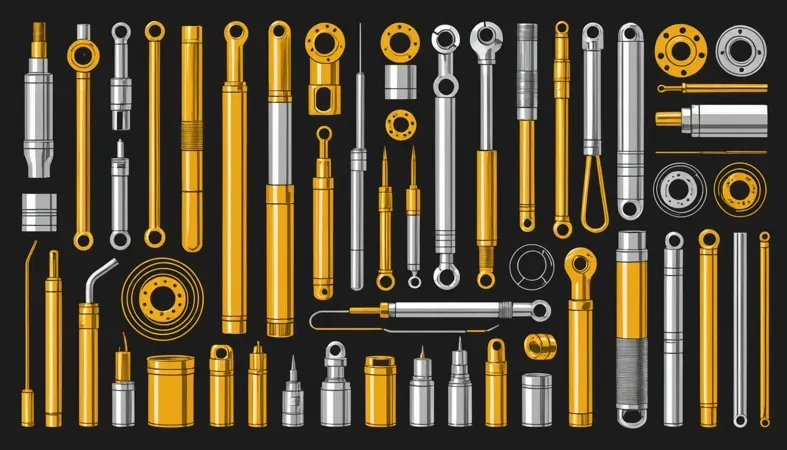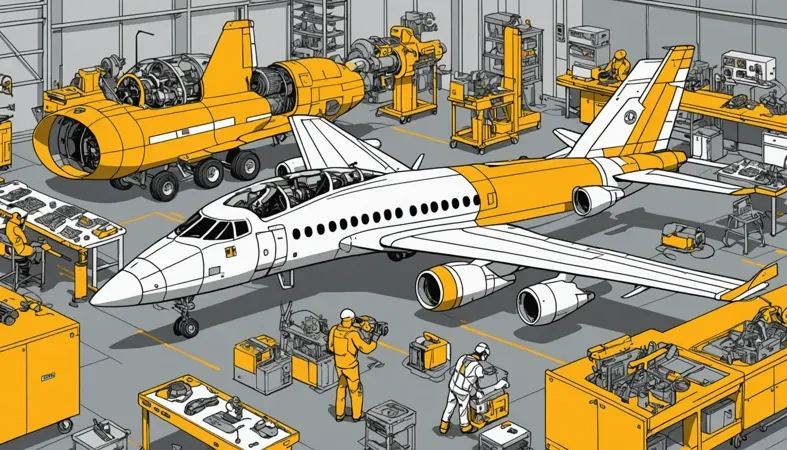What Material Does a Welder Use? (Explore Types, Selection, and Uses)
Published on: March 21, 2025 | Last modified: March 4, 2025
By: Joe Carter
Material is any substance that you can touch or see. It’s what everything around us is made of, like metal, plastic, and wood.
I regularly get inquiries regarding what material does a welder use. This question is crucial because using the right material ensures strong, safe welds. In my experience, picking the right material can mean the difference between a failed project and a sturdy structure.
In this guide, we’ll cover how welding material works, the different types of materials welders use, steps for selecting these materials, factors that influence your choices, and unique challenges in material selection. You’ll also see aftercare tips, inspection techniques, use cases of welding materials, and alternatives for achieving desired welding results. Plus, we’ll touch on what is welding used for and other relevant topics.
Contents
- What Materials Does a Welder Use?
- How Does the Material a Welder Uses Work?
- Types Of Materials Used in Welding
- Steps to Selecting Materials for Welding
- Factors Influencing Material Choice in Welding
- Unique Issues Related to Material Selection in Welding
- Aftercare Tips for Welding Materials
- Use Cases Of Welding Materials
- What Materials Can Not Be Welded?
- Other Options for Achieving Welding Results
- Frequently Asked Questions (FAQs)
- Conclusion
- Additional Reading
What Materials Does a Welder Use?
Welders primarily use metals like steel, aluminum, and stainless steel. Each material has distinct properties, influencing strength and durability. Common applications include construction, automotive, and aerospace, due to their robust nature and ability to withstand stress. It is crucial to wear proper protective gear when welding to prevent serious injuries like eye damage and skin burns, and you can learn more about welding without a mask.
How Does the Material a Welder Uses Work?
When you’re welding, the material you use is crucial. Common welding materials include metals like steel, aluminum, and copper. These materials have different melting points, strength levels, and properties. For example, carbon steel melts at around 1,400 to 1,540 °C (2,552 to 2,804 °F). Selecting the right material ensures a solid weld.
Each material serves a specific purpose. For instance, stainless steel resists corrosion, making it ideal for kitchen equipment. Meanwhile, aluminum is lightweight and suitable for the automotive industry. Knowing the properties of materials helps you choose what’s right for your project.
When using aluminum, you need a specialized filler rod due to its low melting point. I recommend an ER4047 rod for better melting efficiency. Understanding your filling materials is vital for durability and quality, especially considering their casting benefits.
Types Of Materials Used in Welding
What types of materials do welders commonly use?
-
Types Of Steel
Steel is a strong, versatile material used in construction. Welders frequently use various types like carbon steel and stainless steel. To weld steel, choose the right filler material, set your welder to the appropriate amperage (Current)—usually between 70A and 200A depending on the steel thickness—and follow proper techniques for a solid joint. Understanding the potential dangers when working with specific materials is essential. This is particularly true when considering the risks associated with welding galvanized steel.
-
Types Of Aluminum
Aluminum is lightweight and corrosion-resistant. Welders work with aluminum alloys like 6061 and 7075. To weld aluminum, you’ll need a MIG or TIG welder, use an appropriate filler rod, and preheat the metal if it’s thicker than 3/16 inches (4.8 Mm) to prevent cracking. Using the right techniques can help avoid common issues such as causes of porosity in welding.
-
Types Of Copper
Copper excels in electrical conductivity and thermal applications. Welders often use small-gauge copper for wiring and connectors. To fuse copper, control the temperature carefully (Usually Around 2000°F or 1093°C) and use silver-bearing solder to create strong joints without melting the base metal. Additionally, understanding specific welding rods can make your welding more effective, introducing key elements like the numbers on a welding rod.
-
Types Of Titanium
Titanium is lightweight with a great strength-to-weight ratio, popular in aerospace. Welders mainly use grade 5 titanium, a mixture of titanium and aluminum. To weld titanium, ensure everything is clean, use a TIG welder at low amperage—typically between 90A and 150A—and work in an inert gas environment to prevent contamination. Preventing weld defects is crucial, so understanding what causes weld spatter is key.
-
Types Of Plastics
Plastic welding is valuable for fabrications in plumbing and automotive industries. Common plastics include PVC and polyethylene. To weld plastic, use a hot air welder or extrusion welder at the appropriate temperatures, varying by plastic type, typically around 400°F (204°C) for PVC.
That covers the various materials used in welding. Let’s now take a look at the process of choosing welding materials.

Steps to Selecting Materials for Welding
Here are steps to determine which materials to use when welding.
-
Assess the Project Requirements
Start by defining what you’re welding. Identify the structure, function, and environmental factors involved. For instance, if you’re working on a car frame, you need high-strength steel to withstand impact forces. Also, consider thickness; you’re likely looking at materials around 0.8 mm (0.031 In) to 3.2 mm (0.125 In). Choosing the right tools, including appropriate welding rods, is crucial for achieving a strong bond.
Understanding the composition of welding rods is crucial in selecting the right one for your project; this information is detailed in the materials used in welding rods.
Think about the weld’s end use. Will it face extreme heat or corrosion? If so, you’ll need specialized alloys or coatings. Using the right material can prevent costly repairs later. Don’t rush this step; the wrong materials can compromise safety.
-
Determine Compatibility Of Materials
Next, analyze compatibility. Not all metals bond well. For example, welding aluminum to steel often requires a specific filler rod, like ER4047. Welding dissimilar materials can lead to weak joints if you’re not careful.
Check material specifications, focusing on yield strength and thermal expansion. Review welding material databases for compatibility charts, as they simplify this process. A bad match can lead to fractures, so ensure compatibility or choose a more suitable option.
-
Evaluate Welding Techniques
Select a welding method based on materials and project requirements. Common techniques include MIG, TIG, and Stick welding. For instance, TIG works well on stainless steel and aluminum, while MIG handles thicker metals effectively.
I recommend TIG for high precision and clean welds. For speed, choose MIG; it can rapidly weld materials up to 12.7 mm (0.5 In) thick. Consider your skill level too; some techniques may require practice to achieve quality results. Understanding the complexities of a welding machine is crucial for selecting the right equipment, and how welding machines operate can influence your decision-making process.
-
Choose Appropriate Filler Materials
Choosing the right filler can make or break your weld. Applications may require rods, wires, or powders. For example, use 5356 aluminum filler for marine applications, as it ensures durability and resilience.
Know the strength of your filler material; it should match or exceed the base material’s yield strength. I once used an inappropriate filler on a high-stress joint and regretted it; don’t skip this critical choice. Always consult a filler material guide for your project.
-
Review Safety Regulations
Finally, familiarize yourself with local safety regulations regarding welding materials. Certain materials may have usage guidelines, such as prohibitions on flammable or toxic substances. Consult the Material Safety Data Sheet (MSDS) for all materials you’re using; it’s essential for proper hazard assessment.
Staying compliant protects your team and job site. Don’t overlook this aspect, or you risk facing penalties and unsafe working conditions. No shortcuts here; always respect safety rules!
That covers the steps for choosing welding materials. Let’s now take a look at the factors affecting material selection in welding.
Factors Influencing Material Choice in Welding
What factors influence the selection of welding material? Here’s a quick overview.
-
Material Thickness
Thicker materials require different welding techniques and filler materials. For instance, a 10 mm (0.4 In) steel plate may need different wire compositions than a 3 mm (0.12 In) plate.
-
Welding Position
The weld position affects your material choice. Flat welding uses less heat intensity than vertical or overhead positions, influencing the filler material.
-
Environmental Conditions
Consider humidity levels and outdoor exposure. Welding outdoors requires materials that withstand weather changes better, such as stainless steel compared to mild steel.
-
Heat Resistance Requirements
Some projects, like exhaust systems, need materials that withstand high temperatures. For example, Inconel can resist heat up to 900°C (1650°F), making it ideal for high-stress applications.
-
Cost Considerations
Your budget affects material selection. Basic mild steel may cost about $0.26 per pound, while high-quality titanium can reach $5.00 per pound!
That covers the elements affecting material selection in welding. Let’s now take a look at distinct challenges concerning material choice in welding.
Unique Issues Related to Material Selection in Welding
Let’s look at unique technical problems linked to materials in welding.
-
Material Fatigue
Material fatigue can weaken welds over time. Look for hairline cracks to identify it. Use ultrasonic testing for accurate diagnosis. To resolve this, consider using higher-grade materials or adjust your design to reduce stress on welds.
-
Corrosion Resistance Challenges
Corrosion can quickly attack some materials. Conduct salt spray tests for fast identification. I recommend choosing corrosion-resistant alloys, like stainless steel, for moist environments.
-
Thermal Expansion Differences
Different materials expand at different rates when heated. Dense materials like steel expand less than aluminum. Use thermal imaging to detect issues. Choose compatible materials to minimize stress during welding.
-
Quality Control Standards
Materials must meet specific standards. Check for certifications like ASTM or ISO while sourcing. Implementing ISO 9001 can improve quality management and ensure materials meet regulations.
-
Material Availability
Some materials may be difficult to obtain in certain regions. Stay updated on local supply chains. Research online for potential suppliers and alternatives to keep your projects on track.
So far we covered unique considerations in choosing materials for welding. Next, let’s look at care, inspection, and advanced welding tips.
Aftercare Tips for Welding Materials
Here are essential aftercare, inspection techniques, and expert advice for working with welding materials.
Aftercare Tips
After completing your welding project, clean the work area with a solution of 60% denatured alcohol and 40% water. This removes oxidation without harsh chemicals. Store aluminum wires horizontally to prevent bending damage—preferably in boxes to maintain their structural integrity. Seam welding techniques can further enhance the durability and efficiency of your projects by ensuring strong and consistent welds. Learn more about seam welding.
Inspection Techniques
Inspect the welded aluminum with a digital caliper to check for dimensional accuracy within ±0.1 mm (0.004 In). Pay special attention to weld porosity; use a borescope for a detailed view inside the joints. I recommend the ‘Milwaukee 2314-20’ for quick inspections.
Use Cases Of Welding Materials
I know people who use stainless steel for pipeline construction. It has many applications, such as:
- Pipe Joining: Used for low-pressure gas and water pipes. Stainless steel resists corrosion, ensuring durability. It’s popular in the oil and gas industry.
- Shipbuilding: Aluminum provides a lightweight, corrosion-resistant structure, essential for creating fuel-efficient vessels.
- Aerospace Component Fabrication: Titanium offers a high strength-to-weight ratio, critical for parts like engine casings, enhancing performance.
- Automobile Manufacturing: High-carbon steel is used for frame construction due to its excellent tensile strength, making vehicles resilient.

What Materials Can Not Be Welded?
Besides common metals, you can join some other materials without welding. Check out the specifics of non-conventional welding materials.
Overview of Non-Metal Welding Materials
| Material Type | Usage | Welding Method | Common Filler Materials | Challenges |
|---|---|---|---|---|
| Plastics | Used in plumbing and automotive. | Hot air, Ultrasonic | Extrusion Rods | Temperature control critical. |
| Glass | Art installations, windows. | Laser Welding | Specialized glass rods | Requires precise heat control. |
| Composites | Aerospace and automotive. | Resistance Welding | Carbon fiber prepregs | Adhesive bonding properties. |
| Rubber | Seals and gaskets. | Vulcanization | Metal bonding agents | Heat sensitivity issues. |
Additional Insights
When exploring unconventional materials, you might face specific challenges. For example, welding plastic often requires precise temperature control to avoid melting. Similarly, glass welding needs exact heat application to avoid cracks. Each material has unique properties, and understanding these can lead to better project outcomes.
Other Options for Achieving Welding Results
Sometimes, you can’t always use traditional materials for welding. For example, alternatives like epoxy resin or adhesives, such as Loctite, can bond metal surfaces. These options are preferred where heat-sensitive materials are involved since there’s no added heat to warp or damage components.
I’ve faced situations where welding was too risky. In these cases, using mechanical fasteners, like bolts or clamps, worked wonders. It’s all about choosing the right method for your specific needs, ensuring durability without compromising safety. For those situations where converting alternating current safely in welding applications is paramount, knowing how to build a bridge rectifier can make a significant difference.
Frequently Asked Questions (FAQs)
Now let us look at some common questions I typically get asked about welding.
What Material Do Welders Wear?
Welders wear special materials for protection. Welders typically wear flame-resistant clothing, gloves, and helmets. This gear protects against high heat, sparks, and UV radiation. For example, a good welding helmet has a shade rating of 10–14, which helps to shield their eyes during welding processes.
What is the Most Common Metal Used in Welding?
The most common metal used in welding is mild steel. Mild steel makes up about 70% of all welding jobs due to its ease of use and versatility. It’s affordable, available in many forms, and can be welded using various techniques like MIG, TIG, and stick welding.
What Do Most Welders Use?
Most welders use techniques like MIG (Metal Inert Gas) or TIG (Tungsten Inert Gas) welding. These methods require consumables such as welding wires and shielding gases. For instance, MIG welding is known for its speed and ease, making it ideal for beginner welders.
What is Tolerance in Welding?
Tolerance in welding refers to the allowable deviation from a weld’s intended size or position. The typical tolerance in welding is about ±1/16 inch (±1.59 Mm). Proper tolerances ensure fit-up and assembly of welded parts, impacting the quality and functionality of the final product.
What is Used to Weld?
To weld, you typically use a welding machine, filler material, and protective gas. For example, a MIG welder utilizes an electrode wire and argon or CO2 gas for shielding. This combination ensures a strong, quality weld and helps to prevent defects. Understanding the different types of welding equipment can also enhance your welding experience.
Conclusion
That brings us to the end of our article on what material a welder uses. We covered the types of materials, factors influencing their choice, unique issues in material selection, and steps for selecting materials. We also touched on inspection, aftercare, and various use cases in welding.
So, what material does a welder use? In simple terms, a welder typically uses metal materials like steel, aluminum, or copper, combined with welding consumables like rods or wires. Understanding these components helps you grasp how welders join materials, ensuring strong bonds and quality work.
If you’re curious to explore more about the fascinating world of welding, feel free to visit What is Welding for additional insights and resources.
Additional Reading
- American Welding Society. (2020). AWS Welding Handbook: Welding Science and Technology (Vol. 1). Miami, FL: AWS.
- Occupational Safety and Health Administration (OSHA): Welding, Cutting, and Brazing: https://www.osha.gov/welding-cutting-brazing
Joe Carter is a retired welding professional with over 40 years of hands-on experience in the industry, spanning ship repair, structural welding, and even underwater projects. Joe is a master of MIG, TIG, and Stick welding. Passionate about mentoring the next generation of welders, Joe now shares his decades of expertise and practical insights to help others build rewarding careers in welding.
American Welding Society, Material Selection, MIG Welding, Types Of Metals, Welding, Welding Applications, Welding Materials, Welding Safety, Welding Techniques, Welding Wire







